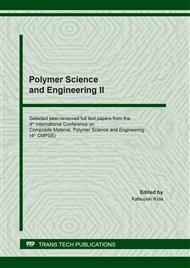p.3
p.9
p.15
p.23
p.29
p.37
p.43
p.49
Investigation of the Mechanical Behavior of Natural Vegetable Fibers Used in Composite Materials for Structural Strengthening
Abstract:
This research aims at studying the mechanical properties of industrial hemp fibers and promoting their use as a reinforcing composite material for strengthening of civil engineering structures. Natural hemp fibers are of great interest due to the following advantages they have: low cost, high strength-to-weight ratio, low density and non-corrosive properties. The use of plant fiber composite materials has increased significantly in recent years because of the negative reduction impact on the environment. For example, the tendency to use renewable resources and their possibility for recycling. They cause fewer health and environmental problems than synthetic fibers. Natural fibers, in addition to environmental aspects, have advantages such as low densities, i.e. have low weight, interesting mechanical properties comparable to those of synthetic fiber materials, and last but not least, low cost. Composites based on natural plant fibers can be used to reinforce or repair reinforced concrete structures, as shown by research on flax fiber composites. These concretes specimens strengthened with biocomposite materials have very good resistance to bending and significantly increase the rigidity of the structure. The results show that the hemp fiber reinforcement has significant effects on the strengthening and increase in flexural strength from 8% to 35 %.
Info:
Periodical:
Pages:
15-21
Citation:
Online since:
June 2021
Authors:
Keywords:
Price:
Сopyright:
© 2021 Trans Tech Publications Ltd. All Rights Reserved
Share:
Citation:


